4 Ways to Reduce Wildfire Fuels Around Your Property
Last year, wildfires in California burned over 4 million acres of land and decimated an estimated 10,000 structures and homes. This year, the Dixie Fire has already scorched more than 500,00 acres. The Dixie Fire has also set the record for largest single fire in California history. Unfortunately, numerous regions of California face mandatory evacuations or warnings. Wildfire season has entered full force. However there is good news, and your property and home don’t have to be reduced to ash.
All of us must work together to minimize the rising threat of wildfire in Sonoma County. But we especially need to pay attention to long-term solutions. One of the most effective ways to take initiative is to practice responsible vegetation management to reduce the number of fire fuels in our environment.
This article outlines four ways you can reduce the wildfire fuels around your property and maintain a safe and defensible space.
1. Learn the Wildfire Defensible Space Zones on Your Property
Defensible space is the area surrounding a building or structure. This space is maintained specifically to safeguard the property from potential damage in the event of a wildfire. At the same time, it also serves as a safe area for firefighters and first responders to work to slow the spread of the fire.
Your wildfire defensible area extends roughly 100 feet around any structure on your property. It is split into two zones.
Zone 1: Extends 30 feet from structure
- Remove all dead or dry vegetation
- Plant shrubs and trees a minimum of 10 feet away from any structure
- Never store woodpiles in zone 1
Zone 2: Extends remaining 70 feet from structure
- Never let brush or grass grow over a max of 4 inches tall
- Maintain a minimum of 6 feet between the lowest hanging tree branches on the ground
- Maintain a minimum of 10 feet between tree branches and structures
The certified arborists at Atlas Tree can help you identify the wildfire defensible zones on your property. They can also help you build a long-term vegetation management plan.
2. Regularly Trim Low Hanging Tree Branches
Trim low hanging branches regularly to maintain a wildfire defensible space. Arborists refer to this trimming method as creating vertical spacing. Moreover, it is an essential step in reducing fire fuels. In the event of a fire, proper vertical spacing minimizes the likelihood of a low-burning fire spreading up from the ground or lower vegetation to a higher tree canopy or the roof of a structure. The lowest branches on your trees should be at least 6 feet from the ground. Understandably, this requirement is higher if there are any shrubs growing beneath the tree.
3. Remove Dead Trees
In Sonoma County, a dead or dying tree is more than just an eyesore. It is a fire hazard. In areas like ours that are already at high risk of wildfire, professional tree removal is a fundamental part of ensuring the safety of our community. Brittle bark and dried leaves of a dead tree will feed a fire and enable it to grow bigger, hotter, and more rapidly. Sudden Oak Death and drought kill hundreds of thousands of trees across Sonoma County. Therefore, keep an eye on your trees, especially oaks, for signs of death or decay.
Dead or dying trees also pose a risk of falling (failing). Any tree or tree limb that could easily fail is considered extremely hazardous. For instance, if a tree fails, it could injure someone, damage property, or damage essential utilities. Failed trees or tree limbs can cause roadblocks which inhibit access to first responders. If you have any trees on your property that need to be removed, or that you believe may be potentially hazardous, contact Atlas Tree for an inspection as soon as possible.
4. Practice Regular Vegetation Management
Unmanaged vegetation is not just an eyesore. It can also harbor pests and vermin, lower your property value, and be incredibly hazardous fire fuel. However, you can eliminate these risks altogether. Practice responsible vegetation management through targeted control and removal of brush, grasses, weeds, and other organic debris.
Responsible Vegetation Management Includes:
- Regularly thinning shrubs, brush, and grasses
- Remove dead, dry, or overgrown plant debris
- Keeping roofs and gutters free of debris
- Trimming and pruning tree branches regularly
- Inspecting trees for signs of possible infestations or diseases
- Having dead or dying trees removed
At Atlas Tree, our team understands the importance of vegetation management and values the longevity of your property’s safety, health, and beauty. We can help reduce the fire fuels on your property and provide personalized vegetation management services based on your specific needs.
Contact the Arborists at Atlas Tree to Learn More About How to Reduce the Fire Fuels Around Your Property
For over 30 years, Atlas Tree has been a leader in the Sonoma County tree care industry. Our team is dedicated to ensuring the safety of our community through professional residential and commercial tree care and wildfire fuel management.
Contact Atlas Tree online or give us a call to learn more about our services or to request a free consultation with one of our certified arborists.
